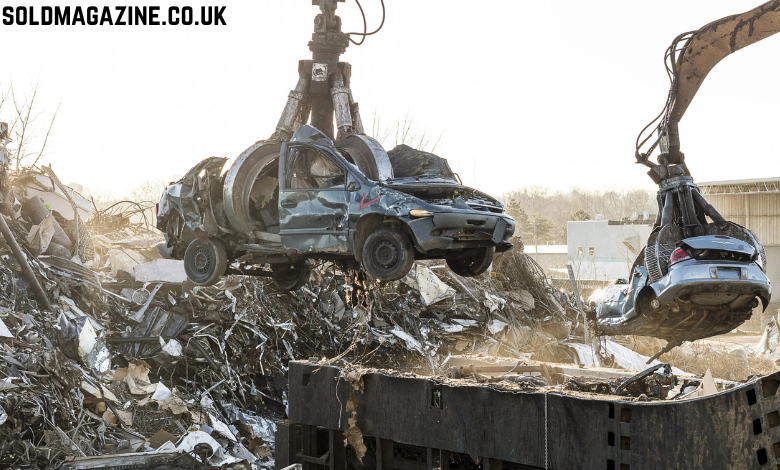Ever wondered what actually happens to your car after you’ve waved it goodbye on the back of a tow truck? You’ve done the paperwork, you’ve got your money, but where does the car actually go? It’s a bit of a mystery to most of us. We just imagine it gets crushed into a cube like in the movies.
But here’s the thing: the journey of a scrapped car is actually a lot more interesting than that. It’s a story of deconstruction, recycling, and rebirth. It’s a surprisingly high-tech process that turns your old banger into the raw materials for new cars, new buildings, and even new phones.
So, let’s follow a car on its final journey. We’ll call her Bessie. She’s a 15-year-old Ford Fiesta, and she’s just failed her MOT for the last time. Her owner has done the right thing and called a licensed Authorised Treatment Facility (ATF).
The First Stop: The De-Pollution Bay
Bessie’s journey begins at the AT8F. She’s not just crushed straight away. First, she’s taken to the de-pollution bay. This is a bit like a hospital operating theatre, but for cars. The goal here is to remove all the hazardous materials safely.
A skilled technician gets to work. They drain all the fluids from Bessie. The petrol, the oil, the coolant, the brake fluid – it’s all carefully collected into separate containers. These fluids will be cleaned and recycled, or disposed of safely. They can’t just be poured down the drain.
Next, they take out the battery. Car batteries contain lead and acid, which are really harmful to the environment. The battery will be sent to a specialist recycler who will break it down and recover the lead.
Then, they’ll deploy any airbags that haven’t gone off. This is done in a controlled way to make sure they don’t suddenly explode later on. Finally, they’ll remove the wheels and tyres. The tyres will be sent off to be shredded and used to make things like playground surfaces or road materials.
The Second Stop: The Parts Department
Now that Bessie is clean and safe, she’s moved to the next stage. Here, another team of technicians will look her over to see if any of her parts can be salvaged. Just because Bessie has failed her MOT doesn’t mean all her parts are useless.
Her engine might still be in good working order. Her gearbox could have years of life left in it. The doors, the bonnet, the headlights – they could all be used to repair another Fiesta. These parts are carefully removed and taken to the ATF’s warehouse, where they’ll be sold on to garages and car enthusiasts. This is a great form of recycling. It’s much better for the environment to reuse a part than to make a new one from scratch.
The Third Stop: The Shredder
This is the part you’ve probably seen in the movies. What’s left of Bessie – basically just her metal body shell – is now picked up by a giant crane and dropped into a massive machine called a shredder. It’s as brutal as it sounds. Huge metal hammers spin at high speed and rip the car into thousands of small pieces in a matter of seconds.
It’s not just mindless destruction, though. The shredder is a clever bit of kit. As the car is being shredded, the different materials are separated. Powerful magnets pull out all the steel and iron. The lighter materials, like plastic and foam, are blown away by a giant fan. What’s left is a stream of non-ferrous metals, like aluminium and copper.
The Final Stop: The Blast Furnace
Now, Bessie is no longer a car. She’s just a pile of sorted materials. And this is where her new life begins.
The steel and iron are sent to a steel mill. Here, they’re melted down in a massive blast furnace and used to make new steel. This recycled steel could be used to make anything from a new car to a skyscraper.
The aluminium is sent to a smelter, where it’s melted down and turned into new aluminium. This might be used to make new car parts, or even a new phone.
The plastic is sent to a plastics recycler, who will turn it into new plastic products.
By the end of the process, around 95% of Bessie’s weight has been recycled or recovered. That’s an amazing achievement. She’s not just a pile of rust on a scrap heap. She’s been given a new life. Her steel might be in your next car. Her aluminium might be in the can of coke you’re drinking.
So, next time you see a car being towed away to be scrapped, you’ll know that it’s not the end of the story. It’s the beginning of a whole new one. And it’s a story of recycling and renewal that’s happening every day, right across the UK.


